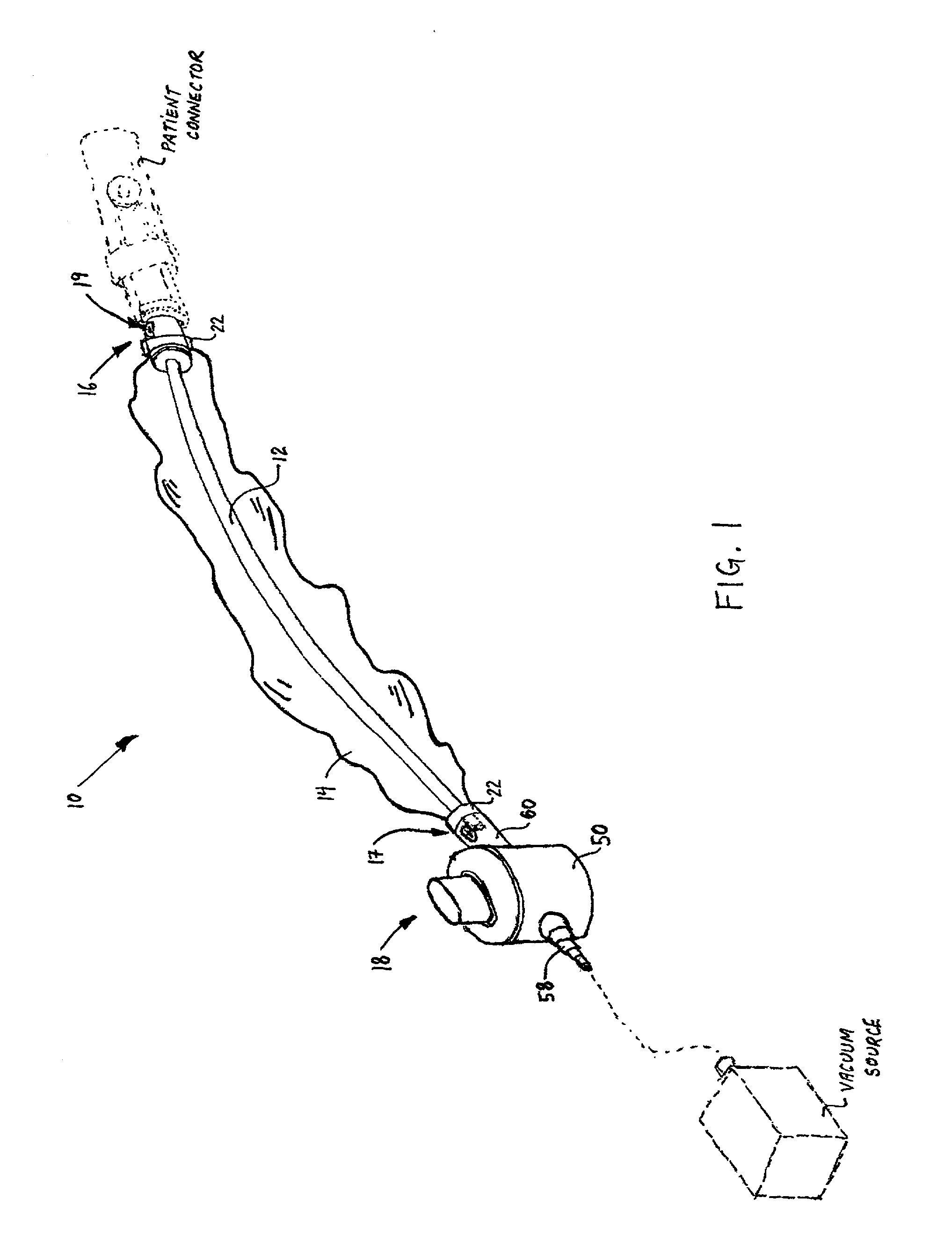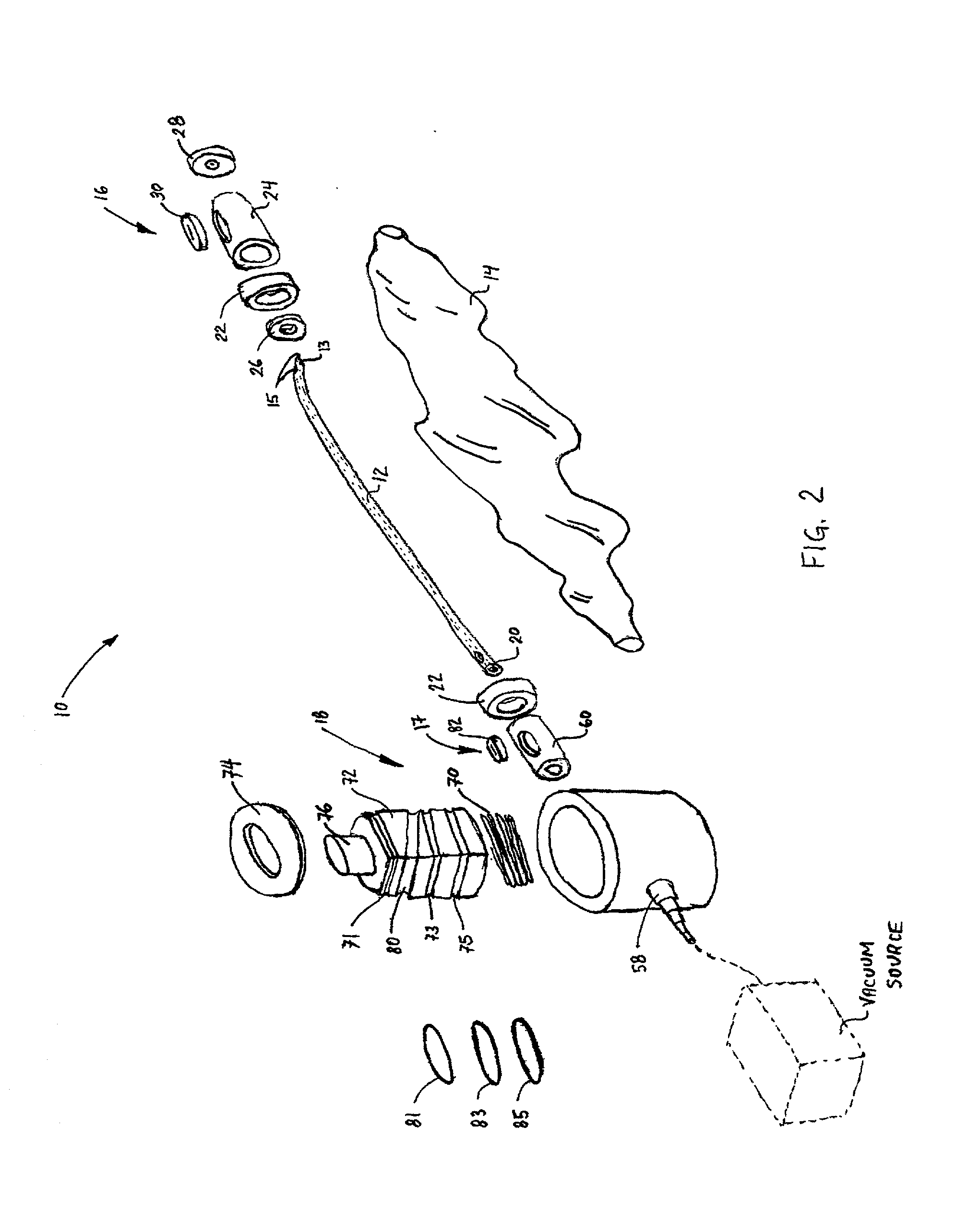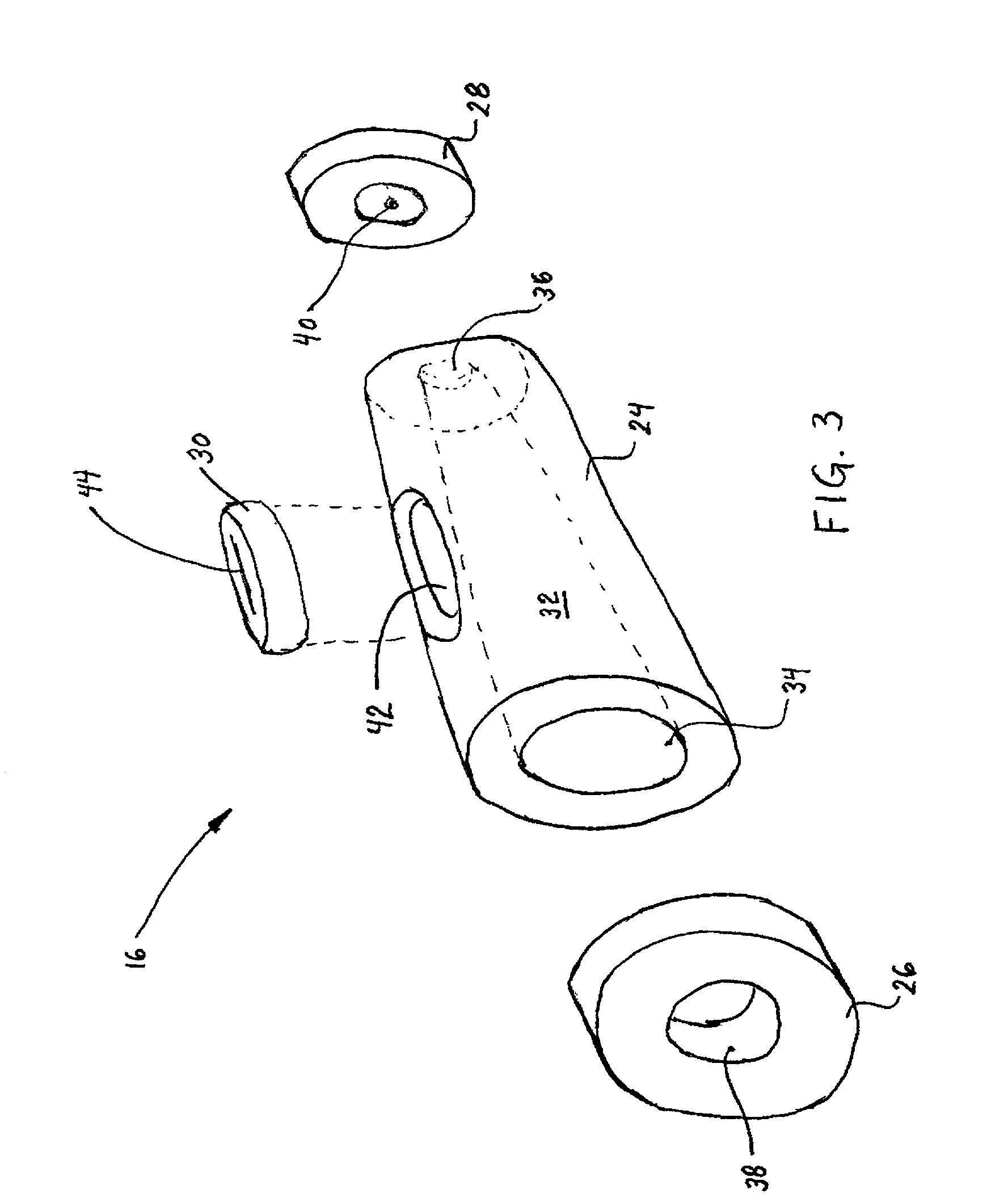Closed catheter suction system
a closed catheter and suction system technology, applied in the direction of suction devices, intravenous devices, couplings, etc., can solve the problems of increasing the risk of patient hypoxia, no device or method for an isolated rinsing procedure is disclosed, and increasing the risk of hypoxia
- Summary
- Abstract
- Description
- Claims
- Application Information
AI Technical Summary
Benefits of technology
Problems solved by technology
Method used
Image
Examples
Embodiment Construction
[0058] Referring to the drawings, the preferred embodiment of the closed catheter suction system of the present invention is illustrated and generally indicated as 10 in FIG. 1. Closed catheter suction system 10 comprises a flexible suction catheter 12 encased within a sheath 14 that is extendable between an adapter assembly 16 and a suction control valve 18. Adapter assembly 16 is attached to a patient connector (shown in phantom) while suction control valve 18 communicates with a vacuum source (shown in phantom) such that secretions can be aspirated from the patient through catheter 12 to the vacuum source for proper disposal. Closed catheter suction system 10 further includes a lavage port 17 located near the proximal end of catheter 12 for providing a means of introducing a lavage solution through catheter 12 during the aspiration procedure. A rinse port 19 is provided with adapter assembly 16 for the instillation of a rinse solution for cleansing catheter 12 of secretions after...
PUM
 Login to View More
Login to View More Abstract
Description
Claims
Application Information
 Login to View More
Login to View More - R&D
- Intellectual Property
- Life Sciences
- Materials
- Tech Scout
- Unparalleled Data Quality
- Higher Quality Content
- 60% Fewer Hallucinations
Browse by: Latest US Patents, China's latest patents, Technical Efficacy Thesaurus, Application Domain, Technology Topic, Popular Technical Reports.
© 2025 PatSnap. All rights reserved.Legal|Privacy policy|Modern Slavery Act Transparency Statement|Sitemap|About US| Contact US: help@patsnap.com



